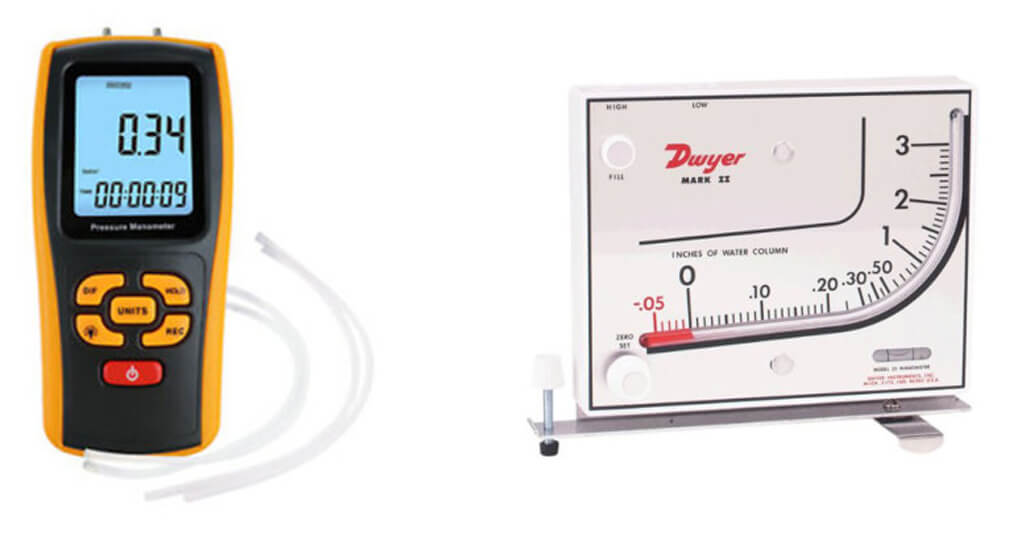The Manometer is a “Must Have” in Every Fireplace Technician’s Toolkit
Fireplace manometer testing is a must have when reading the gas supply inlet pressure and outlet manifold pressure. These pressures are standard requirements for gas appliance manufacturers in the design and function of gas appliances to operate properly.
Gas Supply Inlet Pressure
Manufacturers supply a range of pressures for the appliance to function and operate safely. This range is 7″ WC maximum inlet for Natural Gas with a minimum 5.5″ WC. Propane Gas is maximum 14″ WC inlet pressure and a minimum pressure of 10″WC.
The manometer can be one of the most effective tools in the tool box of a fireplace technician. Pressure reading can determine whether the malfunction is within the fireplace or an external issue prior to the fireplace. This can save a technician valuable time during a service call.
Fireplace Manometer Testing Example
Take a static pressure reading of the inlet pressure, reading is 7″ WC, which is well within the specified range of pressure for natural Gas. Now leave the manometer connected to the inlet pressure tap, turn the unit to ON causing the main burner to turn ON, this reading should not drop more than 1″ WC, in this example from 7″ to 6″ WC. If the reading falls more than 1″ WC this would imply a gas supply issue, such as a shut off not fully open, gas line undersized for the length of the run. Gas pressure dropping below the minimum 5.5″ WC will not allow the gas control to function.
Outlet or manifold pressure will indicate internal issues within the gas control. The constant pressure delivered to the burner of 3.5″ WC for Natural Gas and 10″ for Propane determines the size of the burner orifice. Delivery pressure also determines the size of air mixer openings. Gas controls fitted with adjustable regulators whether manual or electric stepper motors can also be used to verify if these components are functioning as they should or have failed.
Along with the manometer testing, your initial visual observations of the pilot and burner flame help in diagnostics. Pilot flame that reduces in size when the main burner is turned on, indicates a pressure issue which now should be confirmed with the manometer, is this within specification. Burner flame surging/pulsing/lifting, is this a gas control regulator failure or the supply regulator failure.
Conclusion
The manometer is one of the most useful tools in a technician’s tool box. It can save time in identifying the source of the problem, reduce the replacing of parts, and save valuable time during a service call. This benefits both the service technician and the homeowner.
Does your fireplace require service? A Montigo authorized dealer in your area can help.
